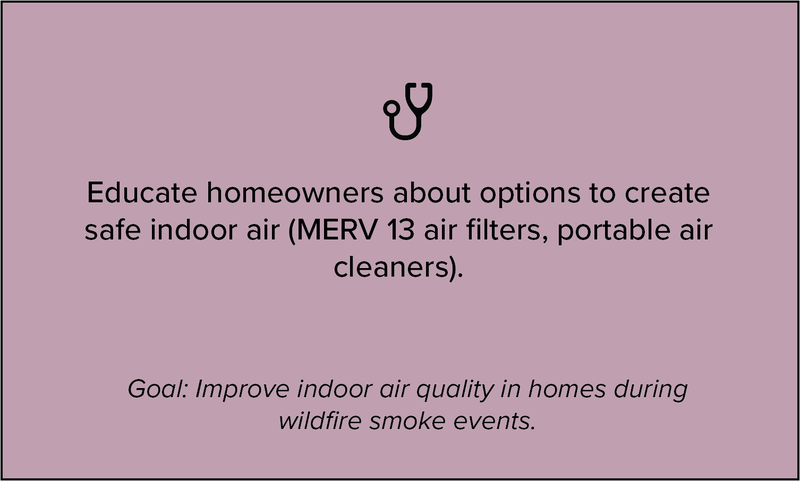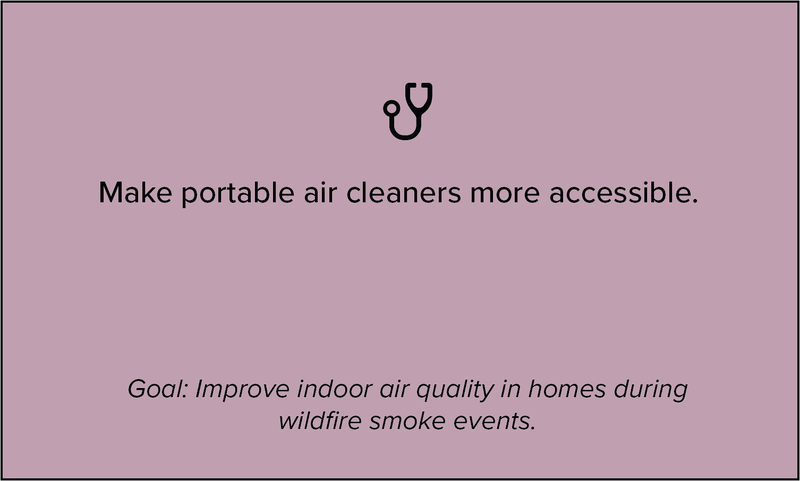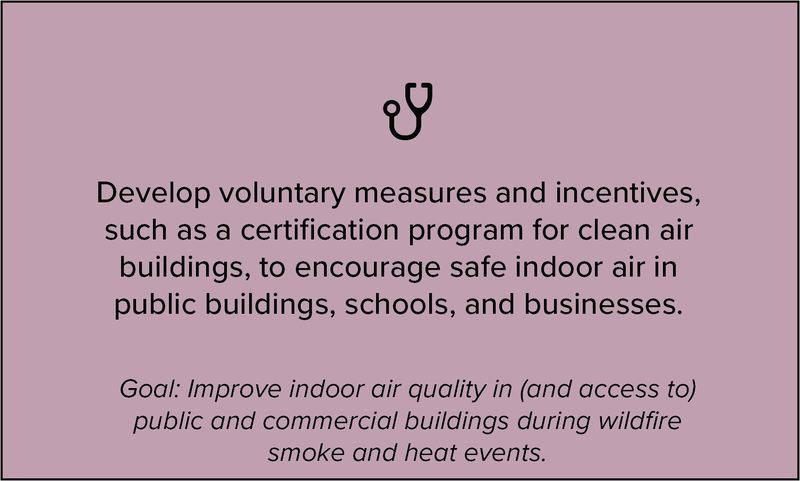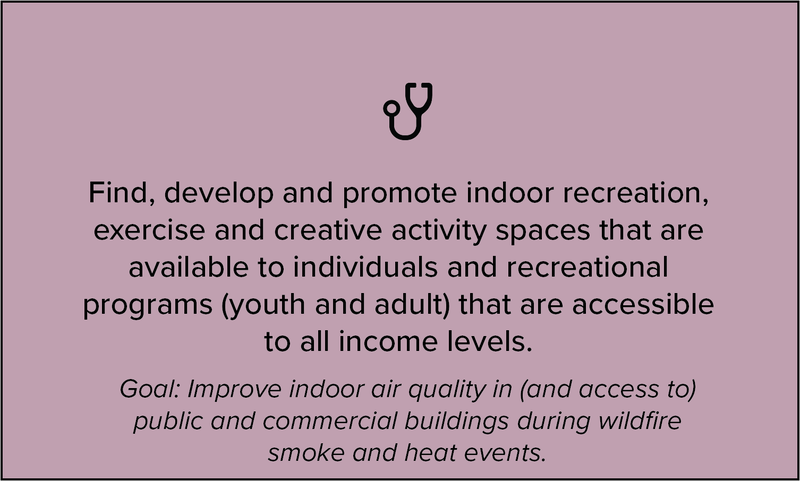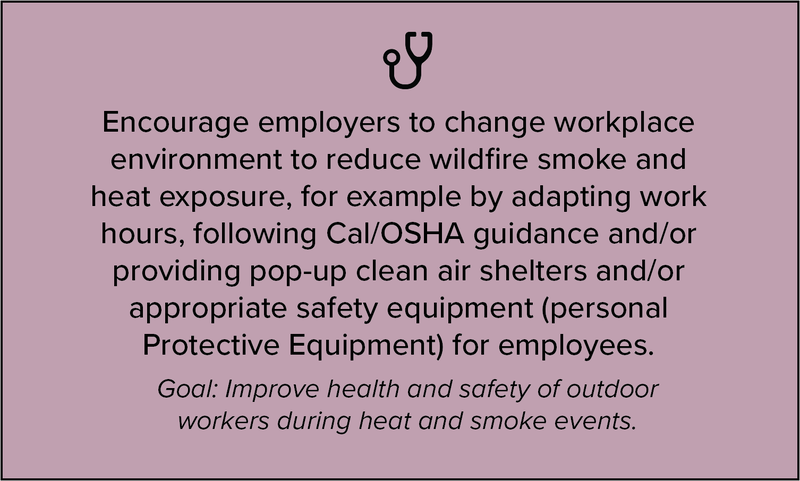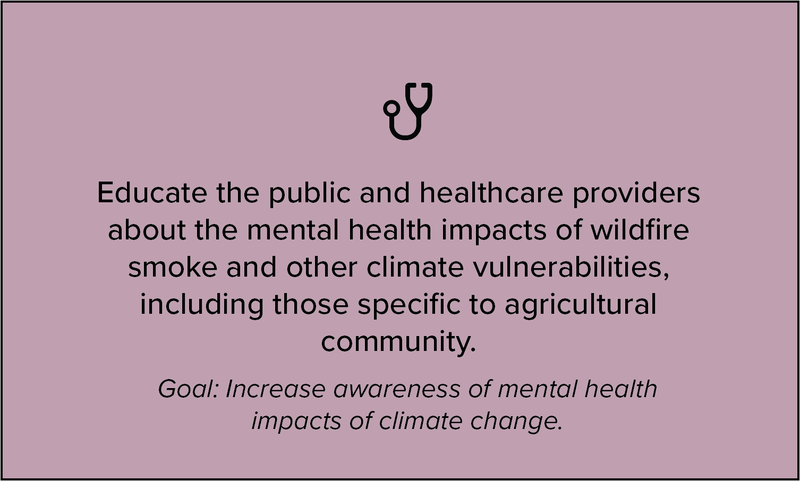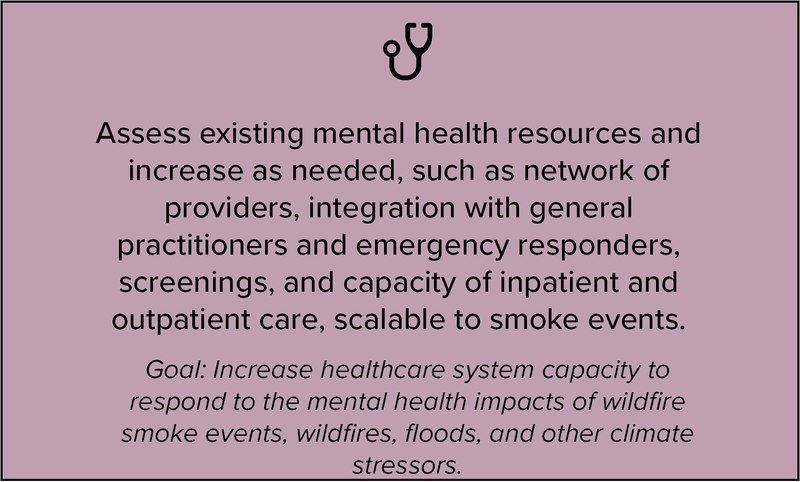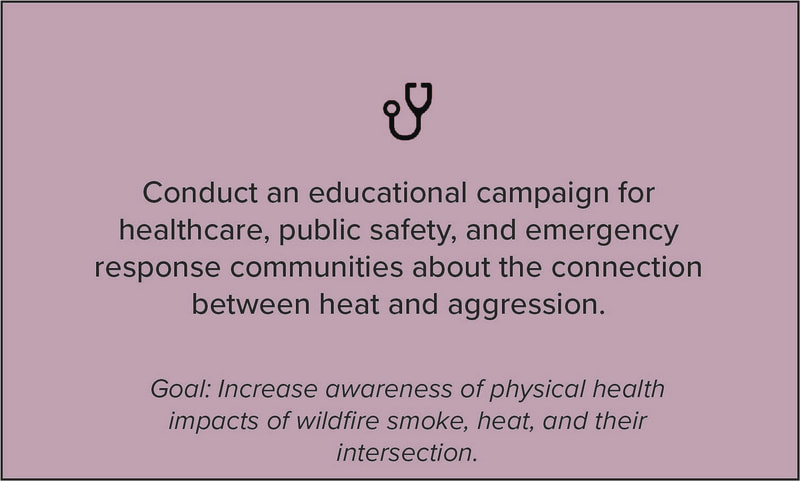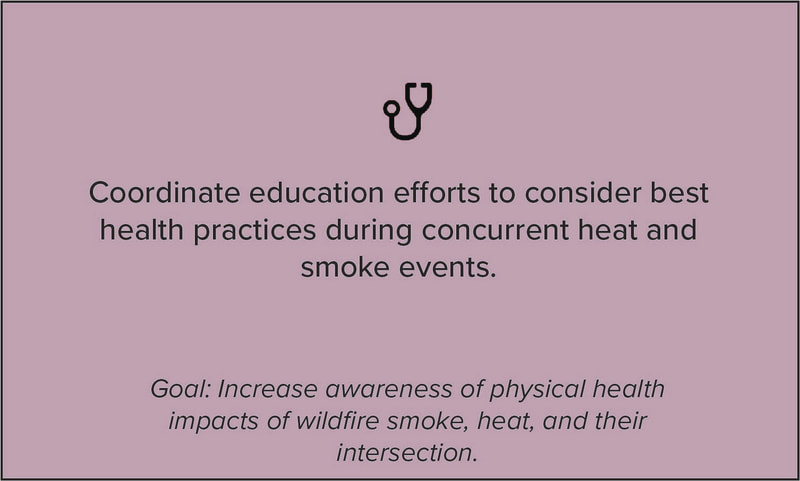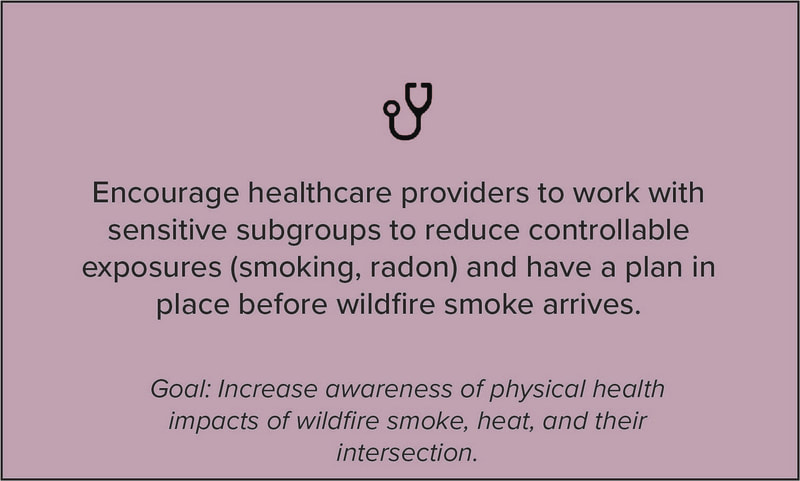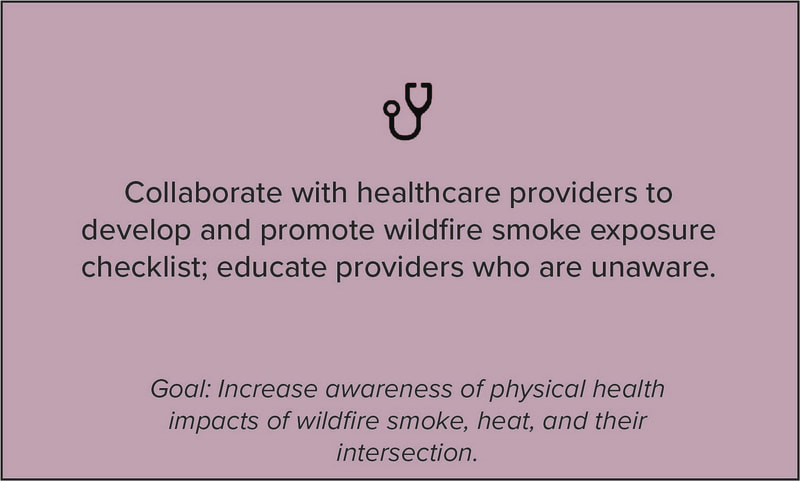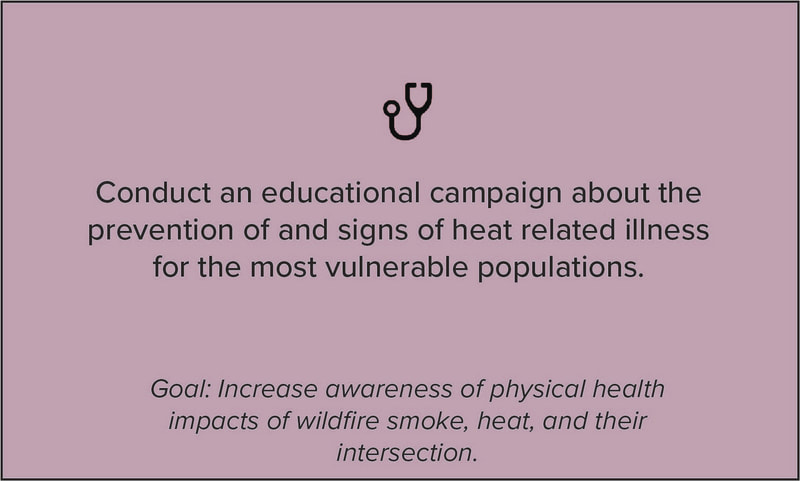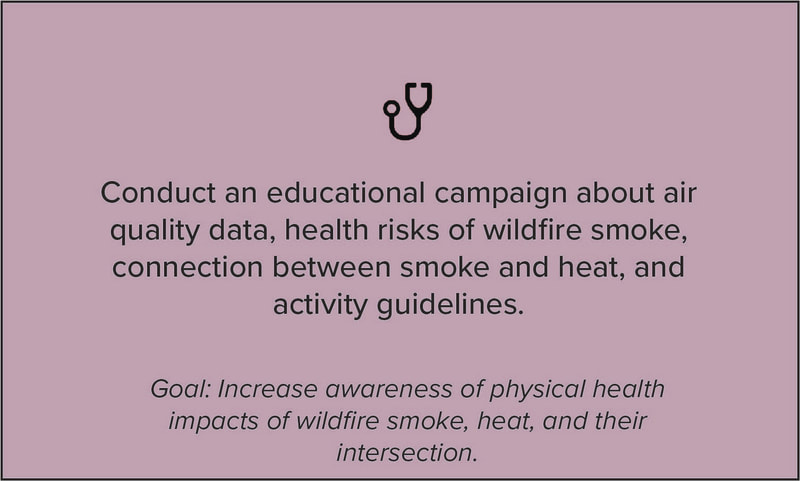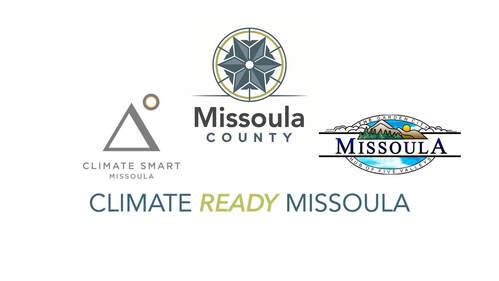Goals and Strategies
Given the health sector's vulnerabilities due to wildfire smoke and heat, we have developed the following goals and strategies.
Goals are presented in bold with their corresponding action items below it.
Goals are presented in bold with their corresponding action items below it.
Improve indoor air quality in homes during wildfire smoke events.
Improve indoor air quality in (and access to) public and commercial buildings during wildfire smoke and heat events.
Improve health and safety of outdoor workers during heat and smoke events.
|
Increase awareness of physical health impacts of wildfire smoke, heat, and their intersection.
Increase awareness of mental health impacts of climate change.
Increase healthcare system capacity to respond to wildfire smoke events, wildfires, floods, and other climate impacts.
|
Do you prefer to think about strategies in terms of which climate impacts they respond to?
You can sort all wildfire smoke, heat, and health strategies by related climate impact below, as well as whether they have a mitigation benefit or strengthen resiliency in a different sector as well as wildfire smoke, heat, and health.

